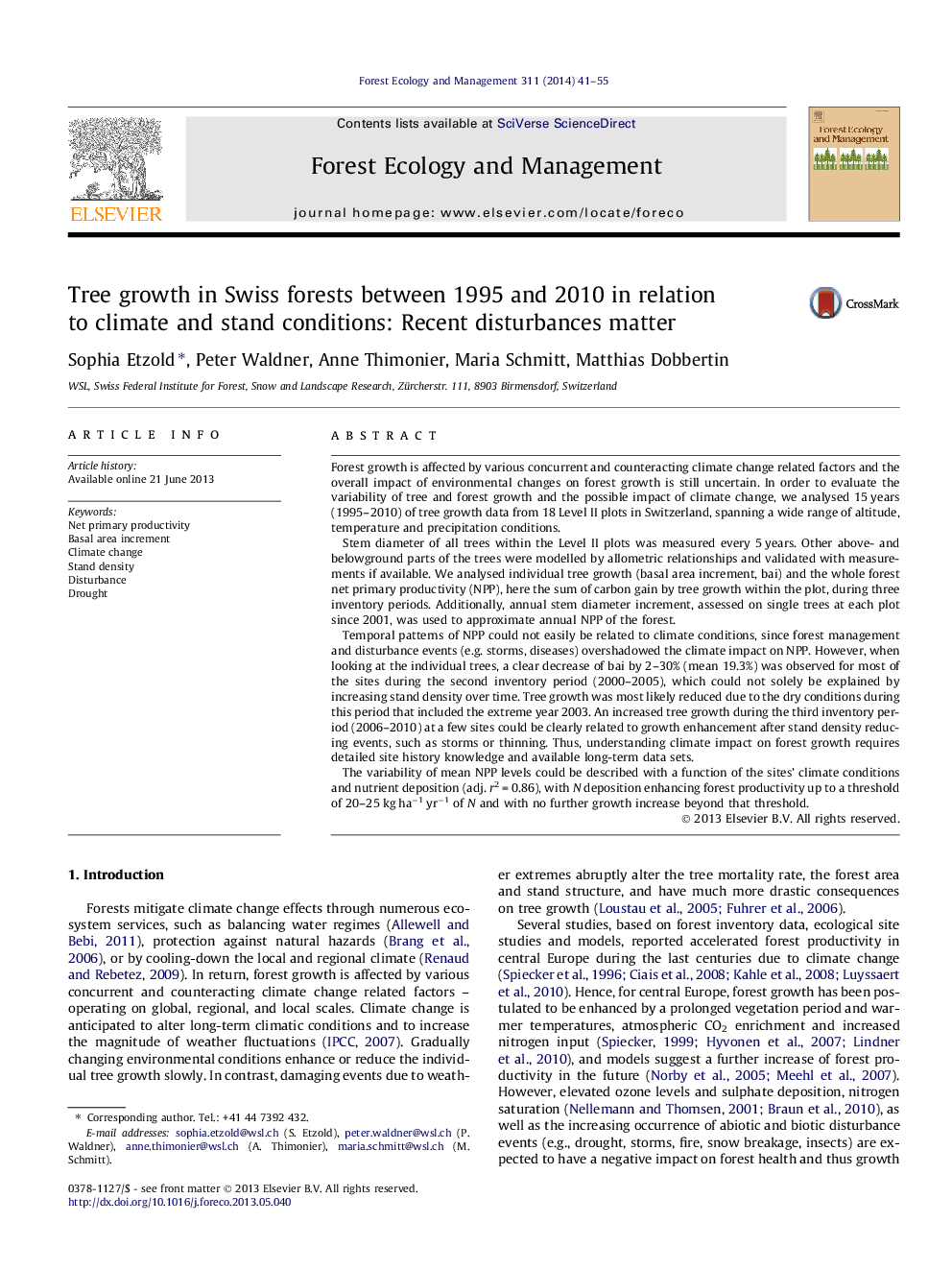| کد مقاله | کد نشریه | سال انتشار | مقاله انگلیسی | نسخه تمام متن |
|---|---|---|---|---|
| 86702 | 159207 | 2014 | 15 صفحه PDF | دانلود رایگان |
• We analysed 15 years of tree and forest growth on 18 sites in Switzerland.
• Disturbances and forest management overshadowed climate impact on forest growth.
• Dry conditions during the years 2000–2005 reduced tree growth at most sites.
• Understanding temporal patterns of forest growth requires a detailed site history.
• Mean forest NPP could be well predicted by climate and nutrient conditions.
Forest growth is affected by various concurrent and counteracting climate change related factors and the overall impact of environmental changes on forest growth is still uncertain. In order to evaluate the variability of tree and forest growth and the possible impact of climate change, we analysed 15 years (1995–2010) of tree growth data from 18 Level II plots in Switzerland, spanning a wide range of altitude, temperature and precipitation conditions.Stem diameter of all trees within the Level II plots was measured every 5 years. Other above- and belowground parts of the trees were modelled by allometric relationships and validated with measurements if available. We analysed individual tree growth (basal area increment, bai) and the whole forest net primary productivity (NPP), here the sum of carbon gain by tree growth within the plot during three inventory periods. Additionally, annual stem diameter increment, assessed on single trees at each plot since 2001, was used to approximate annual NPP of the forest.Temporal patterns of NPP could not easily be related to climate conditions, since forest management and disturbance events (e.g. storms, diseases) overshadowed the climate impact on NPP. However, when looking at the individual trees, a clear decrease of bai by 2–30% (mean 19.3%) was observed for most of the sites during the second inventory period (2000–2005), which could not solely be explained by increasing stand density over time. Tree growth was most likely reduced due to the dry conditions during this period that included the extreme year 2003. An increased tree growth during the third inventory period (2006–2010) at a few sites could be clearly related to growth enhancement after stand density reducing events, such as storms or thinning. Thus, understanding climate impact on forest growth requires detailed site history knowledge and available long-term data sets.The variability of mean NPP levels could be described with a function of the sites’ climate conditions and nutrient deposition (adj. r2 = 0.86), with N deposition enhancing forest productivity up to a threshold of 20–25 kg ha−1 yr−1 of N and with no further growth increase beyond that threshold.
Journal: Forest Ecology and Management - Volume 311, 1 January 2014, Pages 41–55
